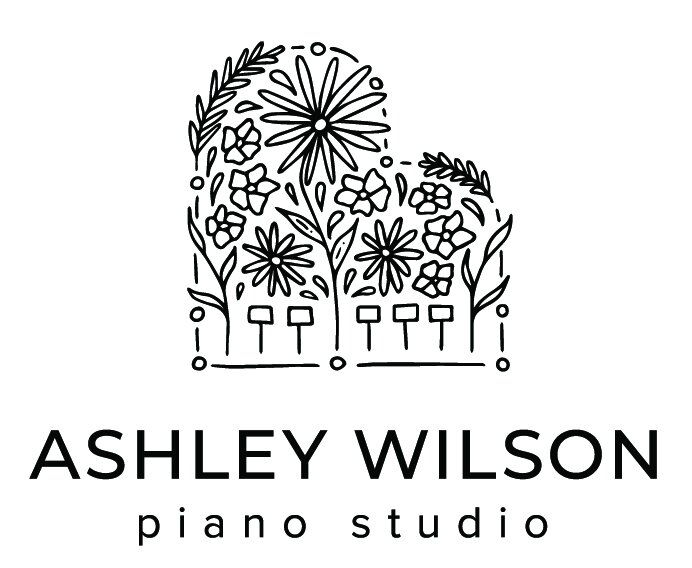Counting Steps to Parnassus?
How do we measure and track progress in such a subjective and vast art form as music? These are a few things that have been working for my studio.
Any discussion of progress—measuring it, tracking it, communicating it to students and parents—has to start with a definition of what progress actually is. I personally like to keep my teaching philosophy simple and specific and the basic dictionary definition of progress aligns well for me.
“prog·ress
forward or onward movement toward a destination.
”
I would add that it’s the acquisition of new skills through repeated practice that pushes us toward the destination. There is always a goal, be it short or long term, that I’m guiding students toward by curating different situations for them to practice skills.
When we know what progress means to us, we can begin to measure it. In the same way that repertoire is layered to include music of varied lengths, difficulty levels, and styles, the ways I measure student progress are layered. My goal is to have a well-rounded group of tools that are objective (based on what is clearly observable), have a mix of formal and informal assessments, look at both short-term and long-term progress, and give students lots of opportunities to self-assess.
The YOYO (You’re On Your Own) Piece
Keeping tabs on what a student is able to do on their own is one way I track progress. A YOYO Piece is music to be learned completely independently with no guidance from me other than one play-through in their lesson. Through this type of assessment, I can gauge a student’s reading accuracy, rhythmic accuracy, understanding of expressive terms, practice habits, and learn about how they approach a challenge. Because students continually engage with the music over the course of a couple weeks, the YOYO Piece targets reading skills in a different way than simply sight-reading. Any weaknesses or misunderstandings in a YOYO Piece inform me how to better support the student and reveal areas that need review in the future—again, the path ahead is being defined.
Student Becomes Teacher
To gauge understanding of a concept, I need to see students produce ideas on their own, in a context where information is not simply being provided by others, to watch the flow and progression of their thoughts and observe the mental framework they’ve built. Since a child’s job is to play—not just to play the instrument, but to actually engage in play—we swap roles and the student pretends to be my teacher. Kids absolutely love assuming the teacher role, and this has become such a staple in our rotation of lesson that students will ask to “play teacher” on their own volition! It’s an activity that allows me to take in so much information about what a student knows without feeling like a test.
Festivals and Performances
At festivals, we get an outside opinion from a master teacher, which includes a confirmation of what we’re doing well and unique suggestions for how to improve. Festival performances are usually graded using a clear and specific rubric and provide an element of objectivity.
I ask my more self-aware students what they want to really see “sparkle” in their festival performances, or make a list of three (a.k.a. “The Big Three”) concepts that a particular piece emphasizes. We later use judges comments to gauge our progress in those areas and set new goals. Forward motion is, again, the theme.
It’s worth noting, though, that festivals and performances only represent one moment in time and one run-through of a piece; they are not the be-all and end-all. Additionally, if students don’t have the opportunity to regularly practice performing (e.g. practice playing under pressure), assessments that involve performing may not be as valid.
Videos
My favorite—and I think it’s safe to say my students’ favorite—assessment tool is videos. Watching videos of ourselves requires different listening and observational skills than hearing and seeing ourselves in the moment, and it’s beneficial to practice observation in different contexts. There are a few ways we use videos.
Technique Tracking
When we begin learning a new technique or milestone concept, we take short, one-minute videos. Students enjoy saying a few words to their future self in these videos. Over the next several weeks, we take updated videos and eventually watch their progress from start to proficiency.
Flashbacks
Students absolutely love watching old performance videos, and Flashbacks always invite the best dialogue. We remember how learning an old piece felt, what the challenges were, what we were proud of in that moment. We take time to compare older videos to newer ones and notice our growth, enjoying what is often a warm, fuzzy moment of happy reflection that has less of an emphasis on goal-setting.
An example of a Flashback video from this spring.
What About Extramusical Progress?
Progress shows up in lots of ways and can be reflected in holistic development—not just musical achievement. Every year, I see students become more open to trying new things. They grow in self-confidence, self-compassion, and empathy toward others. They learn to practice patience, build resilience, manage their time, and set goals. Students also realize that two truths can exist at once (e.g. I’m doing a great job and giving it my all, and there is also still room to improve), learning to balance pushing themselves with resting and recharging. These more subjective ways of making progress are worth celebrating, too.

